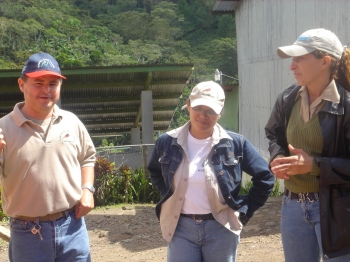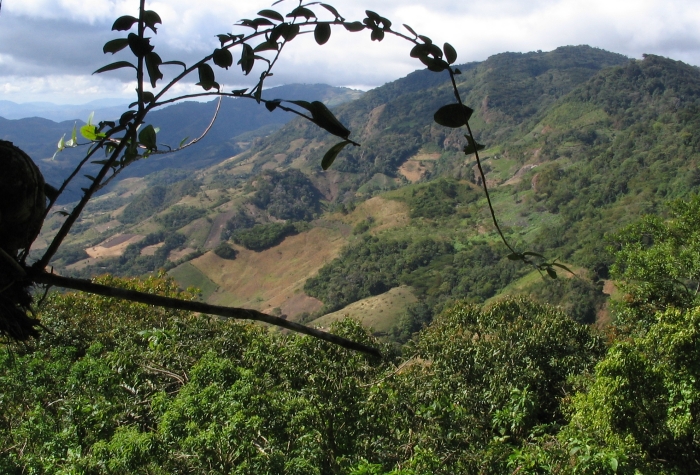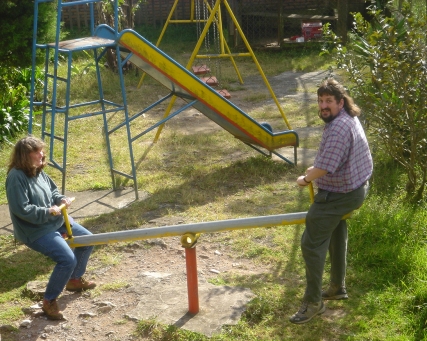Nicaragua Study Tour: Managua to Matagalpa
James Hayes-Bohanan, Ph.DBridgewater State College
Day 8: January 10, 2006
Revised January 25, 2006
Revised January 25, 2006
Nicaragua Study Tour: Managua to Matagalpa
James Hayes-Bohanan, Ph.D |
|
Early in the day, we drove north from the city
of Matagalpa -- along a now-familiar route -- to Finca San Luis a large
plantation that is a member of ASOCAFEMAT.
The contrasts with the small farms we had been visiting were many. It
gave us an opportunity to understand a mode of production that is
responsible for a large share of the world's coffee.  Many of
the same
processes we had seen by hand are replicated on a much larger scale on
this hacienda, where the owner lives in a beautiful home that contains
a significant collection of fine paintings. Manager Joaquin Solorzano
(left, with
blue hat) gave us a detailed tour of the processing plant and answered
a number of tough questions about the treatment of workers,
particularly related to pay and the minimum age. Many of
the same
processes we had seen by hand are replicated on a much larger scale on
this hacienda, where the owner lives in a beautiful home that contains
a significant collection of fine paintings. Manager Joaquin Solorzano
(left, with
blue hat) gave us a detailed tour of the processing plant and answered
a number of tough questions about the treatment of workers,
particularly related to pay and the minimum age.The operation includes 250 acres of both sun-grown and shade-grown coffee, but we did not have the opportunity to visit the crops. This particular farm is a supplier to Starbucks, which means that it must "verify" that it complies with a number of health and safety, environmental, and labor standards that Starbuck insists upon. We learned that "verification" is not nearly as strict as "certification," but that the pressure from Starbucks does have an effect. This particular hacienda has a good reputation for protecting wildlife habitat. The two women shown with the manager are rangers (one volunteer and one employed by the company) with the responsibility of watching for hunting and logging.
We had lunch at El Disparado de Potter, a hilltop restaurant named for the eccentric English investor who developed the train route from Matagalpa to the coffee-growing regions of Jinoteca to the north. The restaurant provides a commanding view of several vast valleys.  Photo: Ben Silva
The restaurant also had a great
little playground -- er, for the kids!
 Photo: Kaitlyn Skerry
Following lunch, we returned to
Matagalpa, where the students enjoyed an hour of what is one of my very
favorite activities: wandering the streets of a small Latin American
city. While doing so, we had an amazing little experience related to
the geography of coffee. I noticed a large shop that had agricultural
supplies of various kinds, and soon realized that it was selling
chemicals for convential coffee growers. When Pam and I went in to see
if we could take photographs, the manager explained that this warehouse
served members of a growers' association known as SAGSA DISAGRO, S.A.
Just then, a few of our students came by, and the manager insisted that
we have a cup of coffee. Although this tasting took place in a room
full of the aromas of agricultural chemicals, Kaitlyn and Holly (below,
right) say that this was the best coffee of the trip!
  |